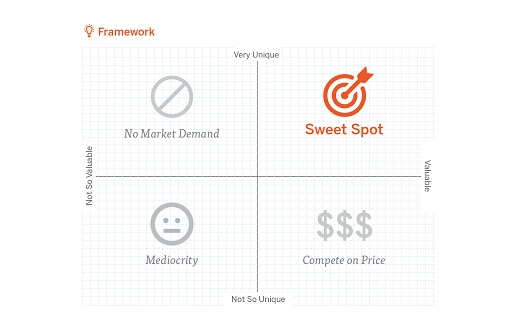Real estate agents are quick to cite the “3 P’s” that govern property investment: “Position, Position, Position!” When all is said and done it’s what counts in property investing. Success in the business of bookkeeping has no single factor, but there are a bunch of P’s (including one from the real estate agent’s playbook) that define the future success of a bookkeeping firm: ‘Pricing Positioning, Proactivity’.
Pricing is not about an hourly billing rate; positioning is not about how you are seated and proactivity is not about being busy. We are talking about the three factors that, if managed effectively, will determine the long term viability of your firm.
Positioning
Just as position is important in the long term value of a property so too is positioning a critical element of your business case. In a recent post we used the sweet spot graphic to illustrate how bookkeeping business owners could map out a positioning strategy that best addressed their strengths and their gaols.

Given the commoditisation of basic bookkeeping data, positioning yourself as the trusted advisor opens you up to a lot of opportunity to add
revenue.
New services and new technologies should be implemented first and foremost to retain existing clients and upsell them on your new capabilities, such as business productivity tools. How unique/common is your service? How valuable is your current service offering? A shift towards specialisation could be the definitive positioning strategy for your firm.
Pricing
Hourly pricing does not work with non-compliance services for multiple reasons. Time has a perceived value, but value is determined by the customer and not the provider of services. If you want to grow it’s imperative that you switch to a simple fixed fee model, if you haven’t already done so.
You’re improving productivity using the latest in technology: the only way to monetize these gains is to build in a margin over your costs and not by matching against hourly billing rates.
Proactivity
There’s a deep ravine between the performance metrics of successful, proactive firms and static, immobilised bookkeeping firms and sole practitioners. Proactivity has many facets that include:
• Investing in change: building staff capability through training
• Building lead generation: adopting best practice in web design and content; activating a lead conversion program
• Educating clients: moving from static content to dynamic marketing solutions such as researching benchmarks in industry sectors where the firm has exposure and using this data to form deeper engagement with the client.
The list goes on to include blogging, contributing to forums, seeking out personal development opportunities.

